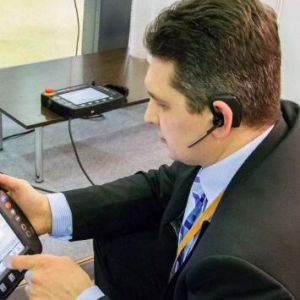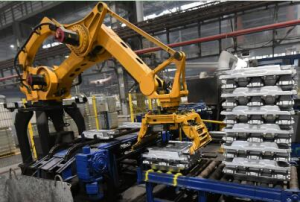According to Russian satellite news agency sputniknews, a future that seemed infinitely distant two decades ago has arrived. It is now commonplace to see robots cleaning rooms or factories where hundreds of machines are tended by just a few people. The world robotics market is developing rapidly, so what is Russia’s position?
According to the use of robots, they can be divided into industrial and service categories. Typically, robots on the production floor are industrial robots, while service robots perform the work of providing services to people. For the time being, industrial robots dominate the market: almost 2m have been installed worldwide. But the number of service robots is booming. Industrial robots: Russia is lagging behind
By the end of 2019, there were 5,000 industrial robots in Russia, an average of five robots for every 10,000 workers. The index is still quite poor, 20 times worse than the world average and 160 times worse than Singapore, the world leader. What explains this gap? Mikhail Grigoliev, an entrepreneur in Novosibirsk, believes that the Russian market is not yet ripe for mass robotisation. Mikhail owns a company called Grinik Robotics that makes one-of-a-kind robotic hands for small and medium-sized businesses.

Photo: MIKHAIL GRIGORJEV
Mikhail Gregoriev, general manager of Greenik Robotics
He said:
“Our potential customers don’t want to invest in automation. It is easier for them to hire migrants from nearby countries and pay 20,000-25,000 rubles a month than to spend 1-2 million rubles on a robot complex. Although many people understand that robotic assistants are more efficient and ultimately less expensive than humans. Second, the industrial robot market in Russia is underdeveloped because of the lack of engineers with specialized knowledge and skills.”

Industrial robots are not yet common in Russian companies
In Russia, 95% of the robot complexes are produced abroad, such as fanuc and Kawasaki of Japan, kuka of Germany, abb of Switzerland, and IGM of Austria. There are only a handful of companies in Russia that specialise in industrial robots and few series of products. For now, Russia is lagging behind in homegrown robots and robot “brain” software, but it is booming abroad. About 40% of industrial robots in Russia are used in automobile manufacturing, mainly the classic six-axis manipulator, engaged in welding, car coloring and semi-finished product handling; Another 30% and 15% are engaged in the electronics industry and pharmaceuticals, respectively. The least robotic sectors are shipbuilding, aircraft manufacturing, nuclear power, mineral extraction and agriculture, where the barriers are mainly high prices.
